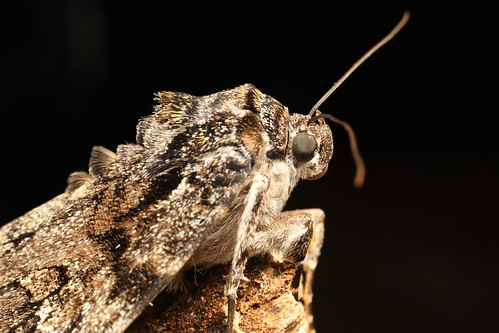ಮಾಡಿರುವುದಿಲ್ಲ ಅಸಾಮಾನ್ಯ ಚಿಟ್ಟೆ, ಆದರೆ ಒಂದು ವಿಶೇಷ ಒಂದು ಹುಡುಕುತ್ತಿರುವ. ಇದು ಕ್ಯಾಟೋಕಲಾ ಇಲಿಯಾ (Erebidae) ((ಹಿಂದೆ Noctuidae)), ಮತ್ತು ಇದು ಓಕ್ಸ್ ಒಂದು ಕೈಬೆರಳೆಣಿಕೆಯಷ್ಟು ಆಹಾರವಾಗಿ. ಇದು ದಕ್ಷಿಣ ಇಲಿನಾಯ್ಸ್ನಲ್ಲಿ ವಾರಾಂತ್ಯದಲ್ಲಿ ನನ್ನ ಬೆಳಕಿಗೆ ಬಂದಿತು, ಟ್ರಯಲ್ ಆಫ್ ಟಿಯರ್ಸ್ ಸ್ಟೇಟ್ ಫಾರೆಸ್ಟ್ನಲ್ಲಿ ಕೆಳಗೆ. ಅನೇಕ ಇತರ ಪತಂಗಗಳಂತೆ ಈ ವ್ಯಾಪಕವಾದ ಜಾತಿಗಳು ಹಲವಾರು ವ್ಯತ್ಯಾಸಗಳನ್ನು ಹೊಂದಿದ್ದು ಅದು ವಿಭಿನ್ನವಾಗಿ ಹೊರಹೊಮ್ಮಬಹುದು – ಜಾತಿಯ ಮಾನೋಗ್ರಾಫ್ ಬಾಕಿ ಉಳಿದಿದೆ…
ನಾನು ಈಗ ಬೆರಳೆಣಿಕೆಯಷ್ಟು ಉತ್ತಮವಾದ ಚಿಟ್ಟೆ ಚಿತ್ರಗಳನ್ನು ಬ್ಯಾಂಕ್ ಮಾಡಿದ್ದೇನೆ ಆದ್ದರಿಂದ ಹೆಚ್ಚಿನ ಸೋಮವಾರ ಪತಂಗಗಳನ್ನು ನಿರೀಕ್ಷಿಸಿ! (ಇದು ಶುಕ್ರವಾರ ಪತಂಗವಾಗಿದ್ದರೂ ಸಹ).


How can I resist a post title such as yours? A monograph? Whom, pray-tell, might be publishing such a useful work? =)
Ignoring the otherwise very moth-y appearance of your highlighted moth, in isolation, it’s antennae would certainly have me scratching my head when going through my VERY crude “moth-or-butterfly” examination. ಆದ್ದರಿಂದ, are the tips of the antennae the same width as the rest, generally, no bulb or some such? And feel free to edify if I’m off base. =) I know if I see feathered I think moth, and if I see a bulb or other larger-then-rest-of-antennae blob at the terminus, I think butterfly. Can you clarify/correct/confirm that and apply to this individual?
ಧನ್ಯವಾದಗಳು, and looking forward to subsequent posts.
ugh, WHO, not whom. pardon. =)